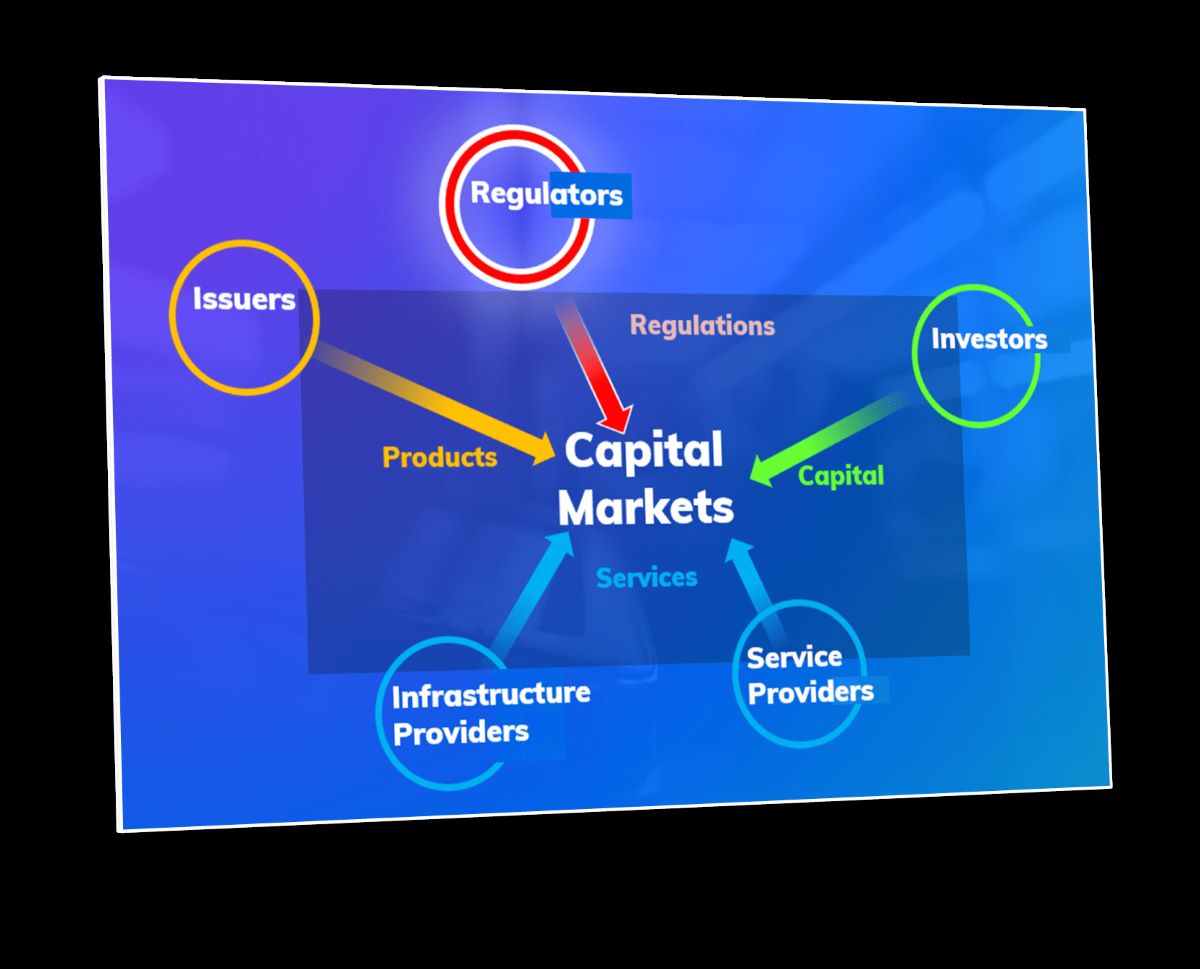

Finance
What Is Capital Accounting
Published: October 9, 2023
Learn about capital accounting and its importance in finance. Gain insights into financial management and how capital accounting can help businesses make strategic decisions.
(Many of the links in this article redirect to a specific reviewed product. Your purchase of these products through affiliate links helps to generate commission for LiveWell, at no extra cost. Learn more)
Table of Contents
Introduction
When it comes to managing finances, businesses and individuals rely on various accounting methods to track their assets, liabilities, income, and expenses. One crucial aspect of financial management is capital accounting, which plays a vital role in understanding the financial health and value of an entity.
Capital accounting, also known as capital expenditure accounting or capital financial planning, is the process of recording, tracking, and analyzing the financial resources that a company or individual invests in long-term assets or projects. It focuses on the acquisition, utilization, and depreciation of these assets, allowing businesses to make informed decisions about their future investments and allocate funds effectively.
The primary objective of capital accounting is to provide a comprehensive view of the financial position of an entity by evaluating its long-term investments and measuring their actual value over time. By maintaining accurate records of these capital expenditures, businesses can assess the performance, profitability, and efficiency of their assets, enabling them to optimize their resource allocation and investment strategies.
Capital accounting is essential for both internal and external stakeholders. Internally, it helps management teams in making informed decisions regarding the allocation of funds, expansion plans, and resource utilization. Externally, it provides investors, lenders, and creditors with a clear understanding of a company’s financial stability, growth potential, and return on investment.
Moreover, capital accounting acts as a benchmark for regulatory compliance. Companies are required to accurately report their capital expenditures and maintain transparency in their financial statements. This not only ensures compliance with legal obligations but also builds trust and credibility among stakeholders.
In the ever-evolving financial landscape, capital accounting plays a crucial role in supporting growth and sustainability. By providing insights into an entity’s long-term investments, it allows businesses and individuals to make strategic decisions, manage risks, and secure their financial future.
Definition of Capital Accounting
Capital accounting is a subset of financial accounting that focuses specifically on tracking and managing an entity’s long-term investments in capital assets. These assets are typically held for more than one accounting period and have a significant impact on the financial performance and value of the entity.
Capital accounting involves the identification, valuation, and recording of capital expenditures, which are the funds allocated for acquiring, improving, or maintaining capital assets. These assets can include property, plant, equipment, infrastructure, and other long-term tangible or intangible assets that are essential for the operation and growth of a business.
The main objective of capital accounting is to accurately measure the value of these assets over time. This is achieved through various accounting techniques such as asset depreciation, impairment assessment, and monitoring of capital asset portfolios. By monitoring the value and performance of capital assets, businesses can make informed decisions related to repair, replacement, or disposal, and can allocate resources effectively.
Capital accounting also involves considering the financing methods used to acquire capital assets. It takes into account the various sources of financing, including loans, equity investments, and retained earnings, and evaluates the impact of these financing decisions on the financial position and profitability of the entity.
Furthermore, capital accounting ensures compliance with accounting standards and regulatory requirements set by financial governing bodies. Accurate and transparent reporting of capital expenditures and the related depreciation or amortization is crucial for providing stakeholders with reliable financial information.
Overall, capital accounting provides a comprehensive framework for managing and evaluating an entity’s long-term investments in capital assets. It helps businesses make informed decisions about resource allocation, improves financial planning and forecasting, and enhances the overall financial health and stability of the entity.
Importance of Capital Accounting
Capital accounting plays a crucial role in financial management for businesses and individuals alike. It provides valuable insights into an entity’s long-term investments and has several key benefits:
- Profitability Analysis: By accurately tracking and evaluating capital expenditures, businesses can determine the profitability of their long-term investments. Capital accounting helps in assessing the return on investment (ROI) and identifying assets or projects that are generating significant profits or causing financial strain.
- Resource Allocation: Effective capital accounting enables businesses to allocate their resources efficiently. It helps management teams analyze past investments and make informed decisions about future allocation of funds, determining which assets to maintain, replace, or divest. This ensures optimum utilization of resources and reduces the risk of wasted or unnecessary expenditures.
- Financial Planning and Forecasting: Capital accounting provides a solid foundation for financial planning and forecasting. By having a clear understanding of the value, depreciation, and expected lifespan of capital assets, businesses can develop accurate long-term financial projections, set realistic goals, and plan for future growth and expansion.
- Lending and Financing: Capital accounting is vital when seeking loans or financing from external sources. Lenders and investors often require detailed information about a company’s capital assets to assess its creditworthiness and financial stability. Accurate capital accounting strengthens a business’s credibility and enhances its ability to secure favorable lending terms and attract potential investors.
- Regulatory Compliance: Compliance with accounting standards and regulations is crucial for businesses. Capital accounting ensures that capital expenditures, depreciation methods, and other relevant financial information are reported accurately and in accordance with the applicable accounting principles. This promotes transparency, strengthens regulatory compliance, and builds trust with stakeholders.
- Strategic Decision-Making: Capital accounting provides valuable data for strategic decision-making. It helps businesses evaluate the cost-benefit analysis of potential investments, assess the risk associated with different projects, and determine the availability of funds for future initiatives. This allows management teams to make informed decisions that align with the organization’s long-term objectives and maximize profitability.
In summary, capital accounting is crucial for businesses as it provides insights into the financial performance, profitability, and value of their long-term investments. It supports effective decision-making, financial planning, and regulatory compliance, ultimately contributing to the overall success and sustainability of the entity.
Components of Capital Accounting
Capital accounting involves several components that work together to track, record, and analyze an entity’s long-term investments in capital assets. These components provide a comprehensive understanding of the financial aspects of capital accounting:
- Capital Expenditures: This component refers to the funds allocated for acquiring or improving capital assets. It includes the purchase cost, installation expenses, and any other costs directly associated with the acquisition of long-term assets. Properly identifying and categorizing capital expenditures is essential for accurate capital accounting.
- Depreciation: Depreciation is the reduction in the value of a capital asset over time due to wear, tear, obsolescence, or any other factors. It is a critical component of capital accounting as it helps businesses allocate expenses related to capital assets over their useful life. Different methods such as straight-line depreciation, declining balance method, or units-of-production method can be used to calculate depreciation.
- Asset Valuation: Asset valuation involves determining the current value or worth of capital assets. It includes assessing the fair market value, estimating residual value, and calculating accumulated depreciation. Proper and accurate asset valuation helps in evaluating the financial health of an entity, assessing the profitability of investments, and making informed decisions about the utilization or disposal of assets.
- Asset Tracking and Management: Tracking and managing capital assets is crucial for effective capital accounting. This component involves maintaining a record of the acquisition, utilization, maintenance, repairs, and eventual disposition of capital assets. Effective asset tracking allows businesses to monitor the performance, depreciation, and overall management of their assets, ensuring compliance with accounting standards and optimizing resource allocation.
- Capital Budgeting: Capital budgeting involves planning and allocating funds for future capital expenditures. It helps businesses evaluate investment opportunities, prioritize projects, and determine the feasibility of acquiring new assets. By considering factors such as expected cash flows, risk assessment, and return on investment, capital budgeting supports strategic decision-making and ensures that the allocation of resources aligns with the entity’s financial objectives.
- Financial Reporting: Financial reporting is a crucial aspect of capital accounting. It involves preparing and presenting accurate and transparent financial statements that reflect the capital expenditures, depreciation, and related financial information. Proper financial reporting ensures compliance with accounting standards and provides stakeholders with reliable data to assess the financial stability and performance of the entity.
These components work together to ensure that businesses have a comprehensive understanding of their long-term investments in capital assets. By accurately tracking and analyzing these components, capital accounting enables businesses to make informed decisions, effectively manage their resources, and maintain financial stability and profitability.
Methods of Capital Accounting
In capital accounting, businesses and individuals employ various methods to effectively manage and track their long-term investments in capital assets. These methods help in evaluating the financial performance, determining the value, and making informed decisions regarding the capital assets. Here are some common methods used in capital accounting:
- Straight-Line Depreciation: This method is widely used for calculating the depreciation of capital assets. It assumes that the asset’s value reduces evenly over its useful life. The depreciation expense is calculated by dividing the asset’s initial cost minus its salvage value by its useful life.
- Accelerated Depreciation: Unlike straight-line depreciation, accelerated depreciation methods allocate higher depreciation expense in the early years of an asset’s life and decrease it over time. This method, such as the declining balance method or sum-of-the-years’ digits method, reflects the fact that assets tend to lose value rapidly in the beginning and slow down as they age.
- Capital Budgeting Techniques: Capital budgeting techniques help in evaluating investment projects and determining which ones to pursue. Common methods include net present value (NPV), internal rate of return (IRR), and payback period. These techniques consider factors such as cash flow projections, risk assessment, and return on investment to assess the profitability and feasibility of investing in capital projects.
- Asset Tracking Software: Utilizing asset tracking software is an efficient method for managing and monitoring capital assets. These software systems automate the recording and tracking of asset information, depreciation calculations, and maintenance schedules. They provide real-time data and analytics, enabling businesses to streamline their asset management processes and ensure accurate and up-to-date information.
- Quantitative Analysis: In-depth quantitative analysis helps in assessing the financial impact of capital investments. It involves analyzing financial ratios, such as return on investment (ROI), return on assets (ROA), and profitability ratios to measure the effectiveness of capital investments. These analyses provide insights into the financial performance and value of capital assets.
- Market Valuation: Market valuation involves determining the current value of capital assets based on market conditions. This method considers factors such as supply and demand, comparable asset sales, and economic indicators to estimate the fair market value of the assets. Market valuation helps businesses assess the potential sale price or value of their assets in the current market.
By employing these methods, businesses can effectively manage their capital assets, accurately calculate depreciation, evaluate investment opportunities, and make informed decisions regarding the utilization, replacement, or disposal of assets. These methods support financial planning, optimize resource allocation, and contribute to the overall financial health and performance of the entity.
Challenges in Capital Accounting
While capital accounting is critical for effectively managing long-term investments in capital assets, it also presents various challenges that businesses and individuals need to address. Some of the common challenges in capital accounting include:
- Asset Valuation: Determining the accurate value of capital assets can be a complex task. Factors such as market fluctuations, technological advancements, and changes in regulations can impact the valuation process. Additionally, intangible assets like intellectual property or brand reputation often require specialized knowledge and expertise to accurately assess their value.
- Depreciation Methods: Choosing the appropriate depreciation method can be challenging. Different methods, such as straight-line or accelerated depreciation, may be more suitable for certain assets or industries. Selecting the wrong method can lead to inaccurate financial statements and misrepresentation of the asset’s value.
- Accounting Standards: Compliance with accounting standards, such as Generally Accepted Accounting Principles (GAAP) or International Financial Reporting Standards (IFRS), can be demanding. Changes in these standards or complex accounting principles and guidelines may require businesses to regularly update their capital accounting practices.
- Data Management: Managing a vast amount of data related to capital assets can be overwhelming. Businesses need efficient systems and processes to accurately record and maintain information about acquisitions, disposals, depreciation, and other relevant data. Without proper data management, errors and inconsistencies can arise, leading to inaccurate financial reporting.
- Changing Regulations: The regulatory environment surrounding capital accounting is subject to constant change. New laws and regulations may require businesses to adjust their accounting practices, reporting methods, or disclosure requirements. Keeping up with these changes and ensuring compliance can be challenging for businesses.
- Technology Integration: Implementing and integrating capital accounting software or systems can be complex. Transitioning from manual processes to automated systems may require significant investment, employee training, and change management. Ensuring proper integration and compatibility with existing financial systems is crucial for seamless operations.
- Risk Management: Capital accounting involves assessing and managing risks associated with capital assets. Businesses need to consider factors such as asset obsolescence, technological advancements, and market fluctuations. Failure to effectively manage these risks can result in poor investment decisions, financial losses, and reduced profitability.
Addressing these challenges requires businesses to stay updated with accounting standards, invest in technological solutions, maintain accurate records, and adapt to regulatory changes. By effectively managing these challenges, businesses can overcome obstacles and maintain accurate and transparent capital accounting practices, contributing to the overall financial health and success of the entity.
Conclusion
Capital accounting plays a crucial role in the financial management of businesses and individuals. It involves tracking, recording, and analyzing long-term investments in capital assets to measure their value, assess profitability, and make informed decisions regarding resource allocation. By accurately accounting for capital expenditures, depreciation, and other financial information, businesses can effectively manage their assets and maximize their financial performance.
The components of capital accounting, including capital expenditures, depreciation, asset valuation, asset tracking, capital budgeting, and financial reporting, provide a comprehensive framework for evaluating and managing capital assets. These components help businesses assess the financial health, profitability, and value of their assets, and make informed decisions about their utilization, replacement, or disposal.
However, capital accounting is not without its challenges. Accurately valuing assets, selecting appropriate depreciation methods, compliance with accounting standards, effective data management, keeping up with changing regulations, integrating technology, and managing risks are some of the complex aspects that businesses face in capital accounting. Overcoming these challenges requires continuous learning, proper systems and processes, and a proactive approach to adapt to changing environments.
Despite the challenges, capital accounting is invaluable for businesses and individuals in financial planning, forecasting, decision-making, and compliance. It provides insights into the financial performance, profitability, and value of long-term investments. It enables businesses to optimize resource allocation, secure financing, and maintain transparency with stakeholders. Through strategic analysis and effective capital accounting practices, businesses can navigate the financial landscape, make informed decisions, and drive sustainable growth.
In conclusion, capital accounting serves as a cornerstone in financial management, enabling businesses to effectively manage their long-term investments in capital assets. By implementing accurate and transparent capital accounting practices, businesses can unlock their true financial potential and pave the way for long-term success.














